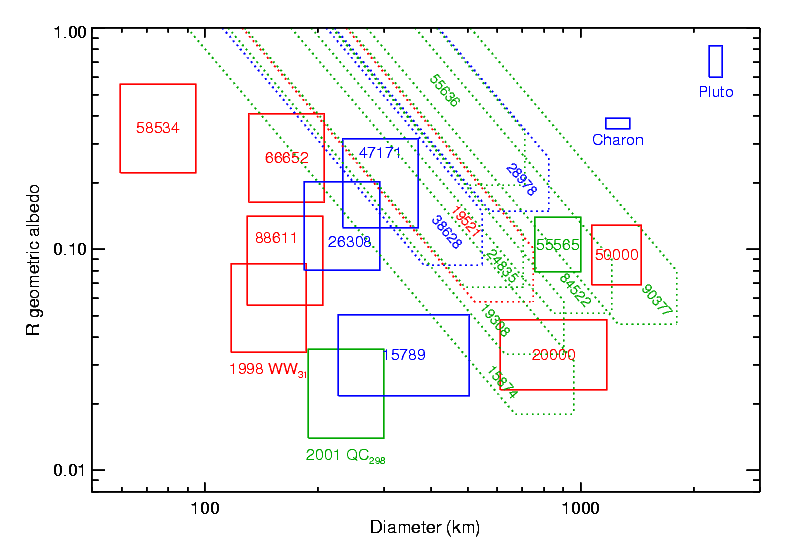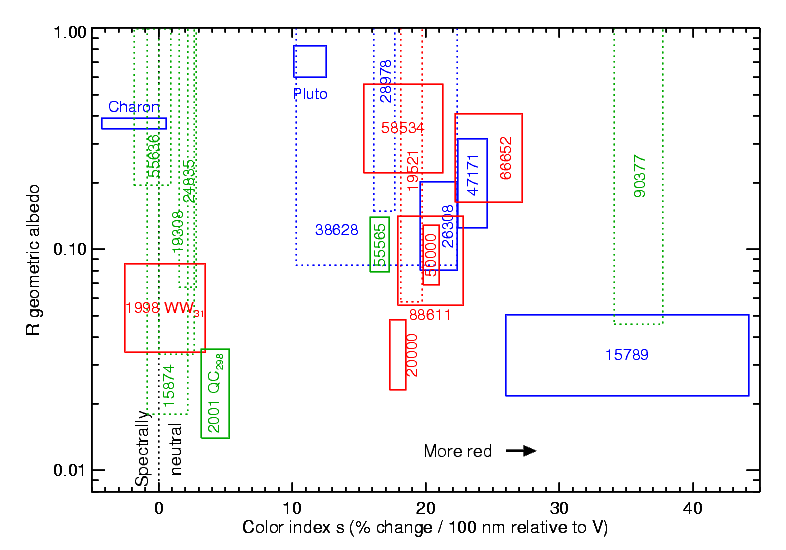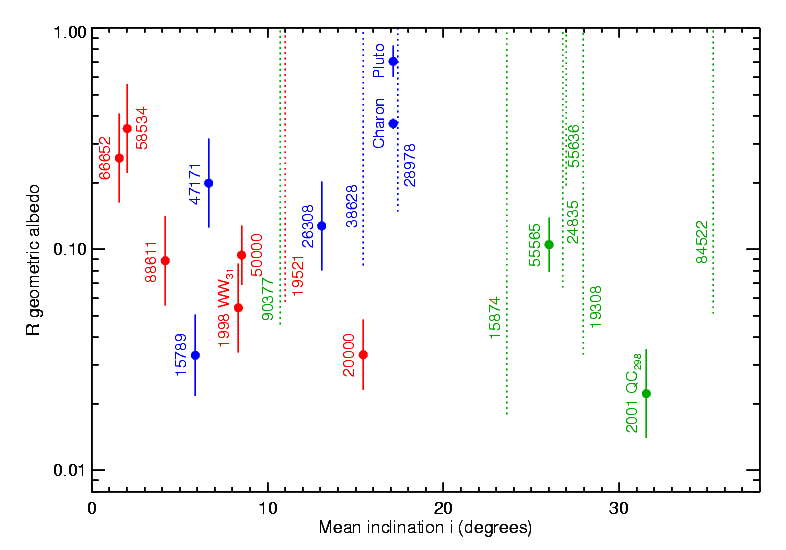
Diverse Albedos of Small Transneptunian Objects
Published in 2005: Icarus 176, 184-191.
W.M. Grundy(1), K.S. Noll (2), and D.C. Stephens(2,3)
(1) Lowell Observatory, Flagstaff AZ.
(2) Space Telescope Science Institute, Baltimore MD.
(3) Now at Johns Hopkins University, Baltimore MD.
Abstract
Discovery of transneptunian object (TNO) satellites and determination of their orbits has recently enabled estimation of the size and albedo of several small TNOs, extending the size range of objects having known size and albedo down into the sub-100 km range. In this paper we compute albedo and size estimates or limits for 20 TNOs, using a consistent method for all binary objects and a consistent method for all objects having reported thermal fluxes. As is true for larger TNOs, the small objects show a remarkable diversity of albedos. Although the sample is limited, there do not yet appear to be any trends relating albedo to other observable properties or to dynamical class, with the possible exception of inclination. The observed albedo diversity of TNOs has important implications for computing the size-frequency distribution, the mass, and other global properties of the Kuiper belt derived from observations of objects' apparent magnitudes and may also point the way toward an improved compositional taxonomy based on albedo in addition to color.



Fig. 1. R albedo is plotted versus estimated diameter d (top panel), spectral slope s (middle panel), and mean inclination i over the past 10 Myr (bottom panel) for 20 TNOs plus the planet Pluto and its satellite Charon. Associated uncertainties are approximated by boxes and error bars, and are dotted for objects having only limits. Colors indicate orbital characteristics: red for Classical objects, blue for objects inhabiting mean motion resonances with Neptune, and green for Scattered objects.